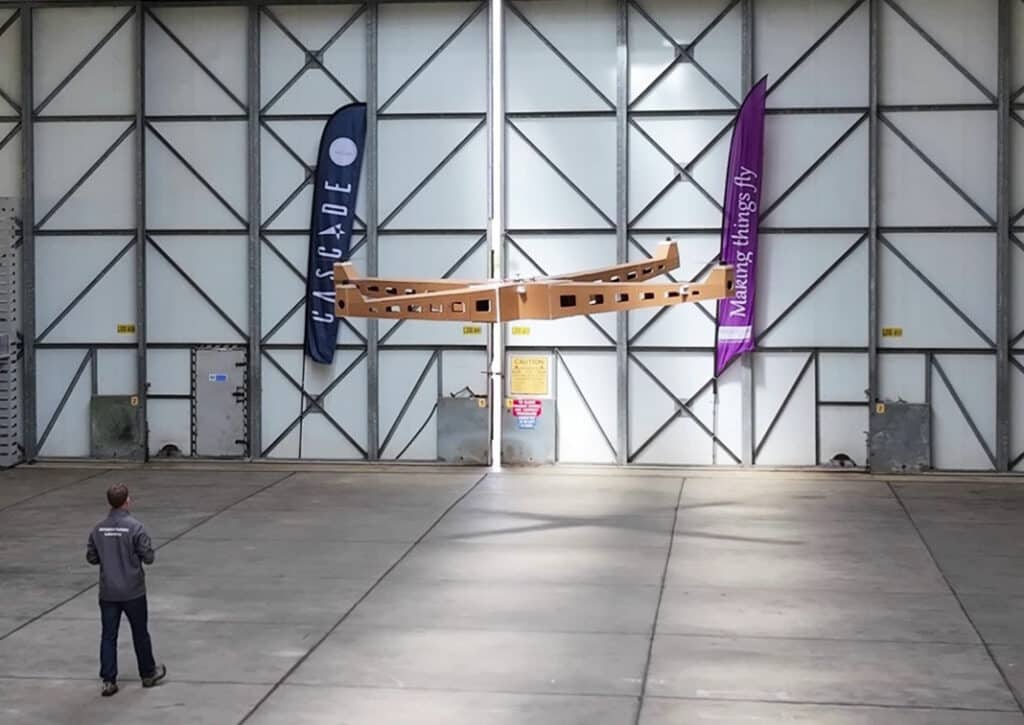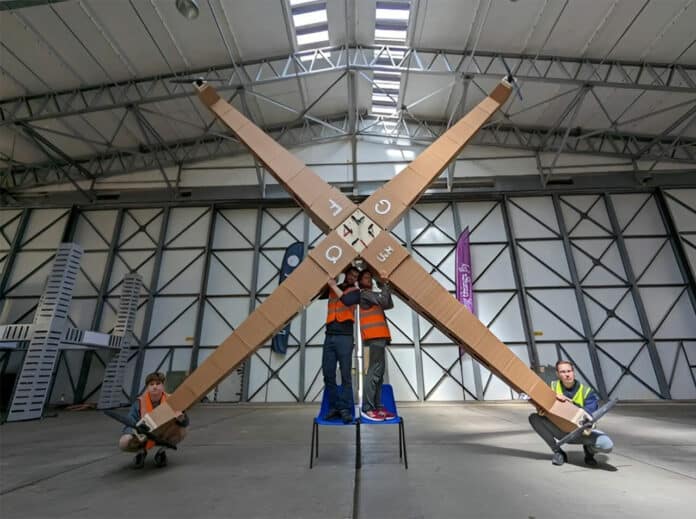Engineers at The University of Manchester have successfully designed and flown the world’s biggest quadcopter drone.
The giant quadcopter project started as a curiosity-driven venture to inspire students’ creativity in design by utilizing a suitable alternative low-cost material for lightweight aerospace structures that is more environmentally friendly than the usual carbon fiber. Unlike carbon fiber, low-density sheet materials can be highly recyclable or even compostable.
Called the Giant Foamboard Quadcopter (GFQ), the drone was built from a 5-mm (0.2-in) thick foamboard, which has a foam core and paper skin. The sheets of foamboard were laser cut to size and assembled into the 3D structure by hand using only hot melt glue.
“Foamboard is an interesting material to work with; used in the right way, we can create complex aerospace structures where every component is designed to be only as strong as it needs to be – there is no room for over-engineering here,” Dan Koning, a research engineer at The University of Manchester, who led the design and build of the vehicle. “Thanks to this design discipline and after extensive background research, we can say with confidence that we have built the largest quadcopter drone in the world.”

This world’s largest quadcopter drone has four arms – formed of a series of hollow box structures – that can be easily removed for transportation. The drone measures 6.4m (21 ft) corner to corner and weighs 24.5kg – 0.5kg less than the weight limit set by the UK’s Civil Aviation Authority for civilian drones.
“There is no record of a purpose-built uncrewed quadcopter (four rotors) of any weight class which is larger than the Manchester vehicle as of the time of writing,” researchers said in the press release.
GFQ is powered by four electric motors running off a 50-volt battery pack. It also has an on-board flight control system and can fly autonomously.
Whilst this drone was developed purely as a proof-of-concept exercise, future iterations of this vehicle type could be designed to carry large payloads over short distances or used as a drone “mothership” in air-to-air docking experiments. Currently, the team is focusing on optimizing the design of the Giant Foamboard Quadcopter to make it even better.
“The lessons we’ve learned from this Pathfinder vehicle should help us add a few more meters to the next one. But to go 50% bigger, you’ve got to get 100% smarter,” Dan Koning said.
